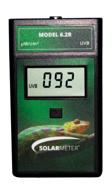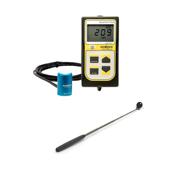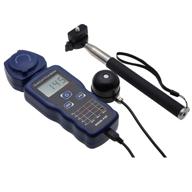
Review on 🔦 Enhanced Extech UV505 Portable UV AB Light by Ronnie Segobiano

Not a UV index meter but works
This meter actually works. However, the strength of the reading is highly dependent on the angle at which you point the detector at the light source. I assume this is because the design uses some sort of color filter. Changing the angle of the filter can shift the frequency/range of light entering the filter, requiring you to move the meter around to get an idea of how strong the UV source might be. It is important to note that this is not and cannot be equated with a UV index meter as the UV index meter appears to use a weight scale formula based on specific frequencies in the UV spectrum. I'm not sure how this meter collects light, but since it appears to be using a color filter I suspect it's probably non-linear in the UV-AB range. If you've ever seen what kind of light/frequencies a color filter can pass, you know that it's not linear, but it does move up and down, passing certain frequencies of light and blocking others. But again, this is just a guess as I don't know the properties of the filter used. Technically the UV-AB range goes up to 400 Nm and this counter goes up to 390 Nm. therefore it does not cover the entire UV-A range. The UV-A in this range, while not as damaging to the skin as other frequencies, is probably not as important. It took a while to test this as we had been cloudy/raining for a long time, but I've tested it on some interior lights as well as my windows that filter out heat (Gila window film) and it shows a relative strength of ultraviolet light Raw sunlight appears to be hovering around 1000 µW/cm2 or less. Whereby the Gila window film only seemed to show single digit values or maybe around 10 µW/cm2. Oddly enough, ordinary windows without film blocked about 50-66% of UV light. As for indoor lighting, most of my fluorescent lights produced negligible ultraviolet radiation. again about 10 μW/cm2 and sometimes even less. while a UV LED flashlight emits about 20 times more UV light. but the numbers jumped sharply for some reason. I've found other counters that look exactly the same but in a different color. Some of them cost a little less. But I don't know if the internals are the same. It's a good meter for the price. If you want something more accurate or with a better range (like something that also detects UV-C light) you'll need to buy a different meter or something more expensive. I had a little problem with the unit button. . It seems that mW/cm2 tends to round off the values a bit compared to UW/cm2. Maybe it's for security reasons, I don't know.
- Excellent overall performance
- Doubtful
New products
Comments (0)
Top products in 🌞 Light Measurement
Another interesting products

🔍 Dioxide Controller for Digital Gas Monitoring

5 Review
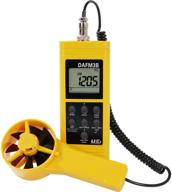
🔧 UEi Test Instruments DAFM3B Digital Multimeter

6 Review
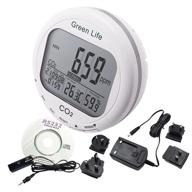
🌬️ Advanced 3-in-1 Indoor Air Quality Monitor with CO2/RH/Temp Data Logging and Audible Alarm - NDIR Sensor Technology

8 Review
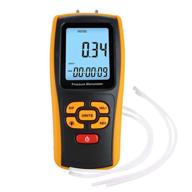
Portable Handheld Manometer 📏 for Accurate Pressure Differential Measurement

5 Review


